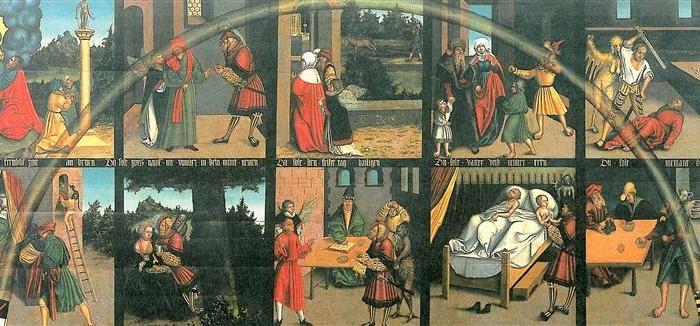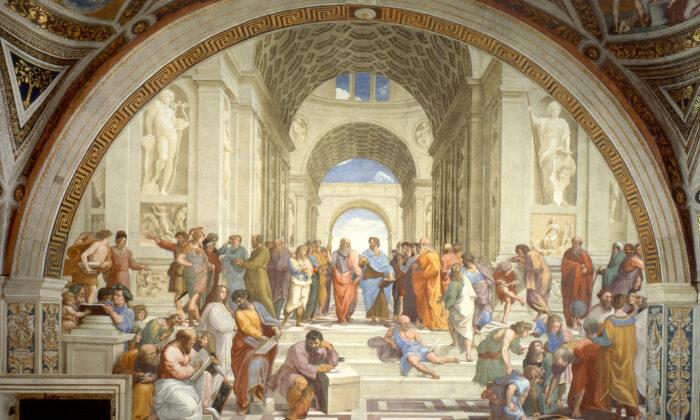Simplicity is the ultimate sophistication. —Leonardo da Vinci
I once saw Leonardo da Vinci’s “The Last Supper.” Then, it was still possible to wander into the UNESCO World Heritage site of the Church and Dominican Convent of Santa Maria delle Grazie in Milan, Italy, and see the mural.What do I remember? The silence. The profound mystery. To weep at such majesty would be sentimental. As Leonardo himself said, “Tears come from the heart and not from the brain.” Leonardo painted the most dramatic moment in time, without drama. All is contained within the strictures of mathematical perspective.
These days, the room in which “The Last Supper” stands is hermetically sealed. One has to go through two sets of doors to enter, and everything closes promptly after one enters. The 15-minute time period for observation and picture-taking is strict. One cannot take a video of the painting.
Da Vinci’s “Last Supper” is a huge painting, about 29 feet wide and 15 feet high. It was made “with tempera and oil on a gypsum preparation instead of the technique commonly used in the fresco period,” according to the Milan Museum. Leonardo was experimenting with his own pigments to seal the painting to the wall before the plaster dried, but it began to deteriorate even during his lifetime.
The wall on which the masterpiece was painted was subject to humidity that hastened its deterioration. In the 17th century, a door was punched in the painting, and 200 years later, Napoleon’s soldiers used the refectory as a stable.
The Painting That Speaks Silently
The “Ultima Cena” is Christ’s final meal with his apostles (a Passover Seder) remembered for two events. One sets out the parameters of the first Eucharist. The other is when Christ says that one of his disciples will betray him.As 16th-century art historian Giorgio Vasari wrote in his famous “Lives of the Artists”: “Leonardo imagined and has succeeded in expressing the desire that has entered the minds of the apostles to know who is betraying their Master. So, in the face of each one may be seen love, fear, indignation or grief at not being able to understand the meaning of Christ; and this excites no less astonishment than the obstinate hatred and treachery to be seen in Judas.”
The composition is pure sacred geometry. It has been simplified and pared of all unnecessary details. It is anchored by an equilateral triangle formed by Christ’s body. He sits below an arching pediment. The light suggests a halo.
The three windows symbolize the Holy Trinity. The four windows along the wall on each side are important in the classical tradition as they represent Plato’s Four Virtues. But all the perspective lines bring us to Christ. In the distance is a verdant landscape. We are left wondering whether it is heaven on earth.
Christ is the epicenter of the narrative. He is the still, eternal center of it all. Within the chaos, there is the eternal.
The apostles are monumental, almost as if too large for the table, too large for the space they occupy. They are in four groups. During the 15th century, Florentine painters, unlike artists before them, believed that the motions of the mind would be apparent in facial expressions and bodily gestures.
This is especially evident in “The Last Supper.” The apostles are propelled into motion by “animal spirits” conveyed through their bodies from their “sensus communis”—where our senses come together—the very seat of the soul.
Leonardo used the body to represent the soul. In his words: “Make the motions of your figures appropriate to the mental conditions of these figures.”
Therefore, the painting is dense with symbolism.
Peter has a knife in his hand, foreshadowing that he will sever the ear of a soldier as he tries to protect Christ. Judas clutches a purse that contains the reward for identifying Christ to the authorities. Thomas points upward, and that finger foreshadows his plunging it into Christ’s wound.
The table is a barrier that separates the spiritual realm from the earthly.
The painting has vertical and horizontal lines, from the outlines of the windows, which are akin to a musical staff. Giovanni Pala, a musician, mathematician, and scholar, posits that the position of the bread rolls and their relation to the apostles’ hands form a musical script. When played left to right, it is mere noise. But since Leonardo often wrote in a mirror-script, if we play the notes backward, from right to left, they sound like a Renaissance dirge.
Leonardo da Vinci has been called one of the greatest minds that ever lived. Painter, sculptor, inventor, scientist, mathematician, anatomist, astronomer, engineer, musician, philosopher, writer: He was gifted in so many ways that his genius was his master. His ego appears to have been subsumed completely by an almost fervent need to discover and unravel the mystery of life. He was a ceaseless explorer of all knowledge.






